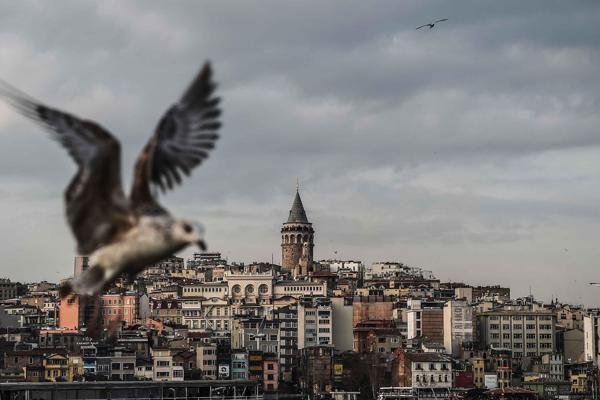Two new residential areas will be built in Istanbul: Minister
Serkan Demirtaş - ANKARA


The government is planning to build two brand new districts in the country’s largest province Istanbul, as part of a bid to relocate residents living in buildings lacking earthquake resistance, Environment and Urbanization Minister Mehmet Özhaseki has told daily Hürriyet.
“There are so many military zones in the outskirts of Istanbul that could be considered barren land. If it is accepted, a new city may be built there and we could accomplish the urban transformations of at least 10 districts,” Özhaseki said on Oct 3.
He cited land on both the European and Asian sides of the city, saying the government is “establishing a new mechanism for Istanbul” and predicting that the urban transformation of the entire country could be accomplished within 15 years.
Around one million people will be able to live in the new district to be built on the European side of the city, with the priority given to those currently residing in buildings without proper earthquake resistance, Özhaseki said.
“We’ll therefore create districts with sufficient earthquake resistance. This will also allow old districts to complete the urban transformation process,” he said.
He specifically referred to Esenler, Güngören, Bağcılar, Eyüp and Sultangazi as districts at first-degree earthquake risks, while Fatih, Bahçelievler and Avcılar are districts at second-degree earthquake risk.
Some 66 percent of the lands in Turkey are located in seismic zones and 71 percent of the population are living in seismic zones, Özhaseki said.
“I’m not an earthquake expert. But from my talks with professors I can see that an earthquake with a magnitude of more than seven is very likely before 2030,” he added.
“As part of the urban transformation plans, we plan to renew around 500,000 buildings a year and 7.5 million buildings in 15 years. If we can implement all these projects on time, we could end the fear of earthquakes within 15 years,” the minister said.
$10 billion budget
Meanwhile, Özhaseki also said that the Bank of Provinces (İller Bankası) will no longer finance municipalities starting from next year.
“We will also privatize a number of social facilities, from which we plan to earn around $2 billion. Another $5 billion will be found from other sources and the İller Bankası will give $5 billion. We’ll therefore provide $10 billion for the urban transformation projects, and we’ll also get loans from the World Bank and the Islamic Cooperation Bank,” he said.
Earthquakes ‘more dangerous than terror’
New regulations to accelerate urban transformation projects could be introduced soon either through decree laws or parliamentary processes, he hinted.
“New measures to speed up this process are on the way. We have no time to lose. In my opinion the earthquake risk is even more dangerous than terror,” Özhaseki said.
New regulations for metropolitan municipalities
Another key issue on the government’s agenda is about metropolitan municipalities, with at least 750,000 residents currently required for a city to be identified as a greater municipal area.
“There is a discussion on whether we should reduce this to 500,000, 400,000 or even 300,000 ... A draft could come to parliament on this in the coming days,” Özhaseki said.
Ministry to inspect municipalities
He also emphasized that his ministry will soon be given authority to inspect all municipalities’ compliance with urbanization and development plans.
“We will establish a system to inspect all greater metropolitan municipalities, as well as city and district municipalities,” he said.
